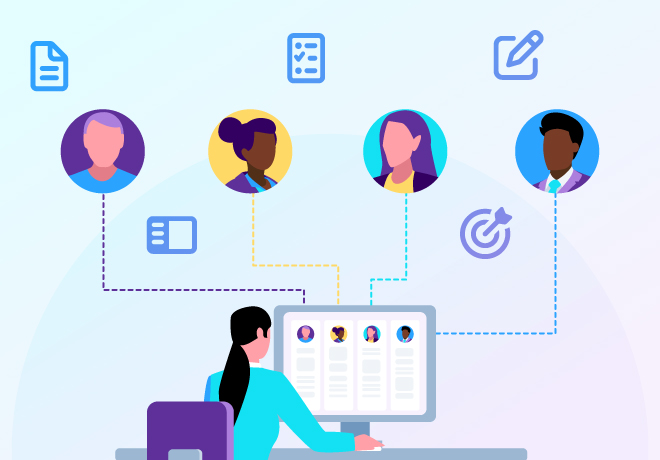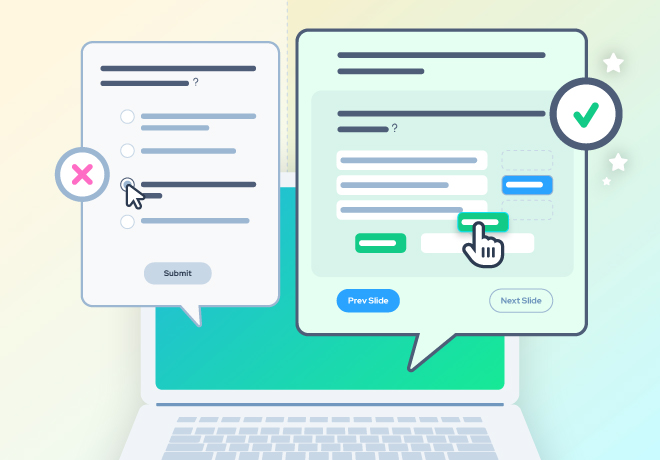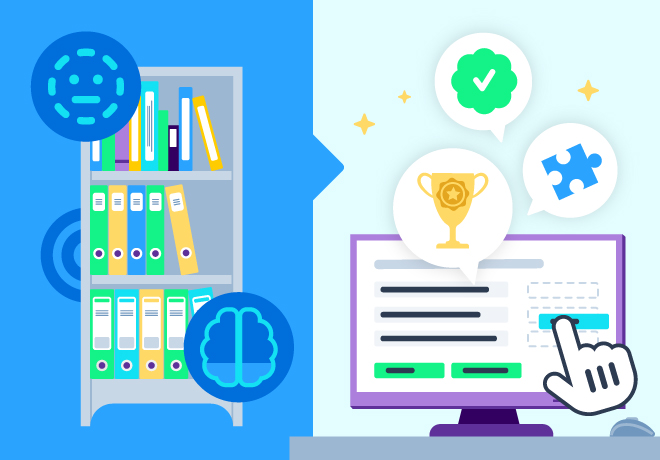
What is workflow learning?

Related articles
Get valuable eLearning insights to your inbox.
Listen to Neovation’s Demystifying eLearning podcast generated with NotebookLM!
Listen to our podcast on your favorite platform!
Ah, the flow state. You know it; you’ve been there. You’re doing your work, cruising along, getting things done, feeling all happy and productive, and then…
- WHOMP! You need a precise definition of a technical term.
- WHOMP! You need to see the schematic of the piece of equipment you are working on because Tab A is most definitely not fitting into Slot B.
- WHOMP! You’re at a client office, and they are asking about a product you sell in more detail than anticipated, and you haven’t sold one in years, so you can’t remember all its features.
- WHOMP! You hit a dead end and don’t know what the next correct step is in the process – because you’ve only done it twice before, and once was with Melinda when you were doing on-the-job training. And where is Melinda right now? Does anyone know? Finding them adds one more WHOMP that slows you down.
When those needed resources are at your fingertips, and you don’t have to interrupt your work completely to find the answer – that’s workflow learning, in a nutshell.
WHOMP! Let’s get into it.
What is workflow learning?
Workflow learning allows your employees to learn or recall needed information without a major interruption to their work – learning that doesn’t interrupt their workflow. It minimizes major interruptive disruptions that reduce efficiency and increase employee stress.

Workflow learning is usually delivered by having adequate performance supports in place (read my article, what is performance support to see how these two concepts are connected.) You can’t have one without the other.
Performance supports are known by many names, including a knowledge base, a resource center, a learning hub, or a document repository – just some of the names for the place where files are stored online within a training management system for easy learner access.
Performance support tools are most commonly short, narrowly focused training and reference assets, like
- Microlearning modules
- Infographics
- Flow charts
- Searchable knowledge bases and glossaries
- Video tutorials
- Audio files (important for training accessibility)
- Chatbot software programmed to answer questions, and
Any other form of information your team may need – that is accessible without having to leave their desk, their workstation. They need to be available in such a way that it causes minimal disruption or interruption to the work your learner is doing – there needs to be very little cognitive load required to access the information. It needs to be easy, feel easy, and truly support your workers in doing their best work.
Why workflow learning is vital to your employee’s success?
Work is stressful. Everyone comes to work every day wanting to do their best work. Interruptions cause friction, and friction causes problems.
Don’t believe me? We all get interrupted. It’s no big deal, right? Wrong. Let me stat at you for a bit. According to a report in Time magazine, on a typical day, the average worker is interrupted about seven (7) times an hour. That’s 56 interruptions per day. Now we’re not measuring the purpose or usefulness or necessity of these interruptions, just that they occur. Wait – oh yes, we are. Same study – 80% of workflow interruptions are considered to be trivial. According to another recent study by Basex Research, interruptions cost the U.S. economy $588 billion in lost productivity.

Holy Mother of Pearl, as Melinda used to say. That’s a big chunk of change.
Change is the issue – redirected focus and task-switching are the culprits. It takes time for a worker to regain their focus and get back in the flow. Okay. I hear you. Yes – some interruptions are necessary. But many are not – and one of the biggest interruption categories – weighing in at 44% of all interruptions occur when workers interrupt themselves. Yeah, yeah, some of that is checking email, or social media, or the company Slack/Teams channel – AND – some of it is because a worker needs to backfill some knowledge that they might have been taught, just can’t remember, and now has to go and find the answer before they can continue with their work.
Let me say that again. Workers interrupt their own flow to access the training they need to continue their work. This is why workflow learning is so important to improving productivity and reducing worker stress – because the data suggests that our team members compensate for interruptions by trying to work faster and that increases errors and causes stress, frustration, pressure, and wasted effort.
And those are all things we don’t want in the workplace. Workflow learning is part of the solution. When fully implemented as part of your eLearning ecosystem, workflow learning provides on-demand knowledge that supports employee learning and performance without disrupting their workflow. You don’t have to assign them to a training course. You don’t have to ask them to schedule time to take an hour-long module in your learning management system (LMS) where most of the information isn’t relevant to their urgent need for a fact (anyone else old enough to remember the TV detective that would say, “Just the facts, Ma’am?) All they need is the right answer to their specific question and a fast, friction-free way to access that – where they are – as quickly as possible not to break their flow.
How can you deliver workflow learning?
Performance supports that aid in workflow learning are usually mobile-first or mobile-friendly, have robust search capabilities, and have a look and feel that reminds learners of similar tools they use to search for information in non-work contexts. They might look like a popular streaming service’s home page or the landing page of a popular eCommerce site – where search engines and visual prompts make it fast and easy to find what they are looking for.

Suddenly, training is just part of the regular workday, with learners engaging in the training they need when and where they need it – a boon to anyone working remotely or for team members that are “out in the field” – things sales teams and product knowledge, for example. This is an approach that most web-savvy workers are already using – when they access Google, Siri, and Alexa to get some information.
These short, focused resources generally require less time and expense to create and maintain than comprehensive courses and can be updated quickly and easily. You aren’t building new courses; you’re just extracting the information you already have and repackaging it into bite-sized, easily consumable resources that your learners can snack on to satisfy their immediate knowledge craving. Ask them what they need to ensure you’ve covered the right stuff.
But back to that 44% number
Yes, some interruptions are normal, natural, and even essential – like a bio-break. And many are not. Having to hunt down a resource – analog, digital, or human – when you need some information can cause unnecessary interruptions and waste time. Finding that binder of schematics – or scrubbing through a one-hour video lesson to find a fact – or looking for Melinda because she was the one who trained you – takes time, creates frustration, and breaks the flow.

If productivity or project time is a KPI you keep your eye on, and I’m almost sure that it is, then empower your team to reduce their self-inflicted interruptions. Make learning resources and training materials available to them as easily accessible performance supports, delivered digitally to the mobile device at their fingertips! Create a culture of ongoing daily training that supports your team and reduces friction, stress, and the cost of workplace slowdowns.
When you’re ready, head to our introduction to online training guide and acquaint yourself with more learning and development articles. Or, may we suggest reading our article “Why make the move to workflow learning?” to gain a glimpse into how to use technologies like microlearning and eLearning to assist you with your workflow learning endeavors.
Productivity is something you can measure. Performance supports are something you can create. Workflow learning is something that will make for happier, more productive, and better-informed employees.
Focus on the flow. The flow knows where it's going – usually straight to the bank, with improved performance and profitability. Get on board, and enjoy the flow.

With 15+ years of online marketing and online learning experience, Susan loves to share insights about where these two ROI-building practices can intersect and complement each other for your business or organization.
Become part of our L&D community
We publish a new learning hub article — full of useful, practical topics — weekly.
Not sure where where you want to start? Jump into one of our recently published articles and see where it takes you!








-svg.svg)
-svg.svg)
-svg.svg)
-svg.svg)